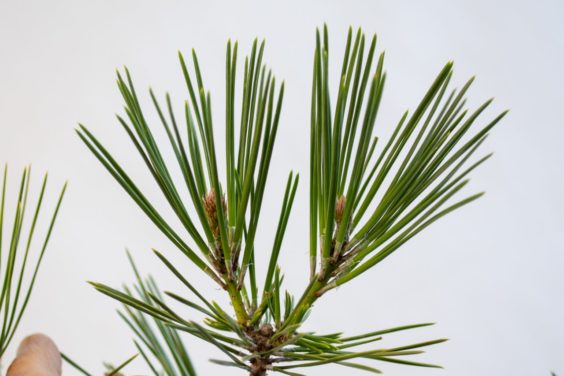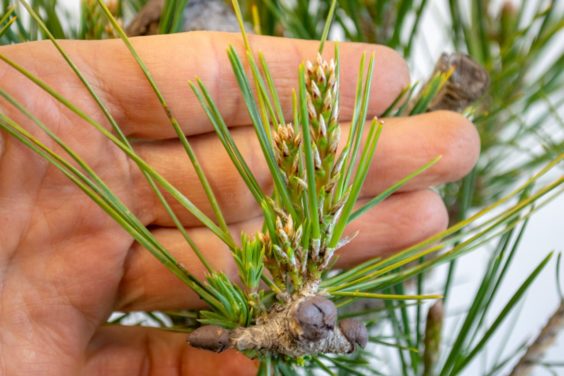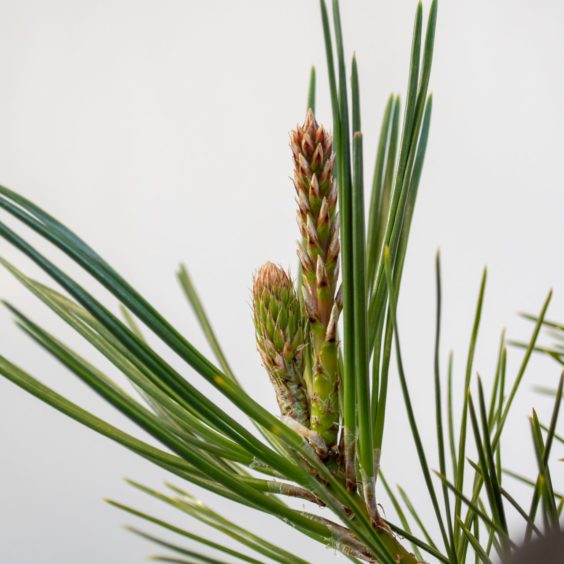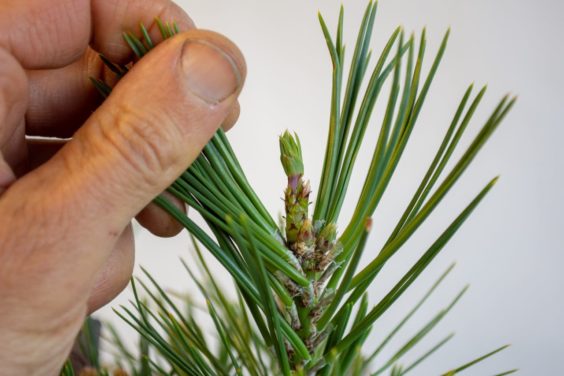In general, we can expect black and red pines to produce a single flush of growth all year. If we remove this growth at the right time, we can expect a second flush to grow in the same calendar year.
On occasion, we might see pines produce this second flush of growth on their own. This is most common on young trees but not uncommon on older trees after removing large branches.
I removed a sacrifice branch from the pine below in March (see “Removing the sacrifice branch” for details). At the time, the spring shoots had just started to elongate.
Today, these shoots are completely open.
14 year-old black pine – June, 2018
As the result of losing such a large branch, the tree redirected a lot of its resources and is now creating new buds at the ends of this year’s shoots.
Summer buds elongating at the ends of spring shoots
The second set of shoots that develop on pines in summer can take a number of forms. Some, like those in the photo below, look like spring shoots that have started to elongate.
Summer shoots that resemble spring shoots
On other branches, we might find shoots next to each other that look quite different.
Different looking shoots on the same branch
Occasionally, some shoots will begin with juvenile growth.
Juvenile growth at the end of a spring shoot
Fortunately, these bonus shoots require no special care. They do, however, merit special attention.
Because the shoots are the tree’s way of signaling excessive vigor, we now have a sign that can guide what we do next. If the tree is early in its development, I’ll continue to let the tree grow. If it’s in the refinement stage, I might try to slow the tree down by reducing the fertilizer, decandling later, and pulling extra needles.
My current plan is to cut back on the fertilizer and decandle this tree at the regular time in late June. I’ll find out how this approach works out in fall.
Subscribe to Bonsai Tonight
New Posts Delivered Every Tuesday and Friday




